“The battle is over whether we can just be ourselves”. A report from the Kharkiv region
An anti-aircraft alert is sounding in Kharkiv and the surrounding towns. I read on Telegram that a Russian MiG-31, an aircraft capable of carrying a Kh-47 Kinzhal missile, has just taken off. But as the sound of sirens ring through the dark streets of Kharkiv, the local residents don't even stop.
For them, it's an everyday occurrence. "If we had to go to the shelter every time there's an alarm, life would be impossible," says a woman I met on a train travelling from Kharkiv to the west. Kharkiv tries to get on with life as normally as possible.
But it lacks one of the things that was part of the city's identity before Russia's full-scale invasion of Ukraine: its vast number of students. The city is known for its universities, which used to teem with young people from not only all over eastern Ukraine, but also the Middle East, Asia and Africa. The city still has a population of about one million, but the streets are no longer crowded with partying youths as they used to be.
Advertisement:Kharkiv is now out of range of Russian artillery, but there is still a threat of missile attacks.
That's why students and schoolchildren are now in their fourth year of studying remotely - counting the COVID-19 pandemic. "A lost generation" is a description that falls from the lips of Ukrainians more than once. The village of Tsyrkuny lies just outside the Kharkiv bypass. When the full-scale invasion began on 24 February 2022, convoys of Russian troops drove through this village.
"They wanted to go further west," says Mykola Sikalenko, Tsyrkuny's village head. A dilapidated BRDM-2 armoured vehicle with "To Berlin'' painted on it serves as proof of that. Its journey ended just 20 km after the Russian border.
It didn't even make it to Kharkiv itself.
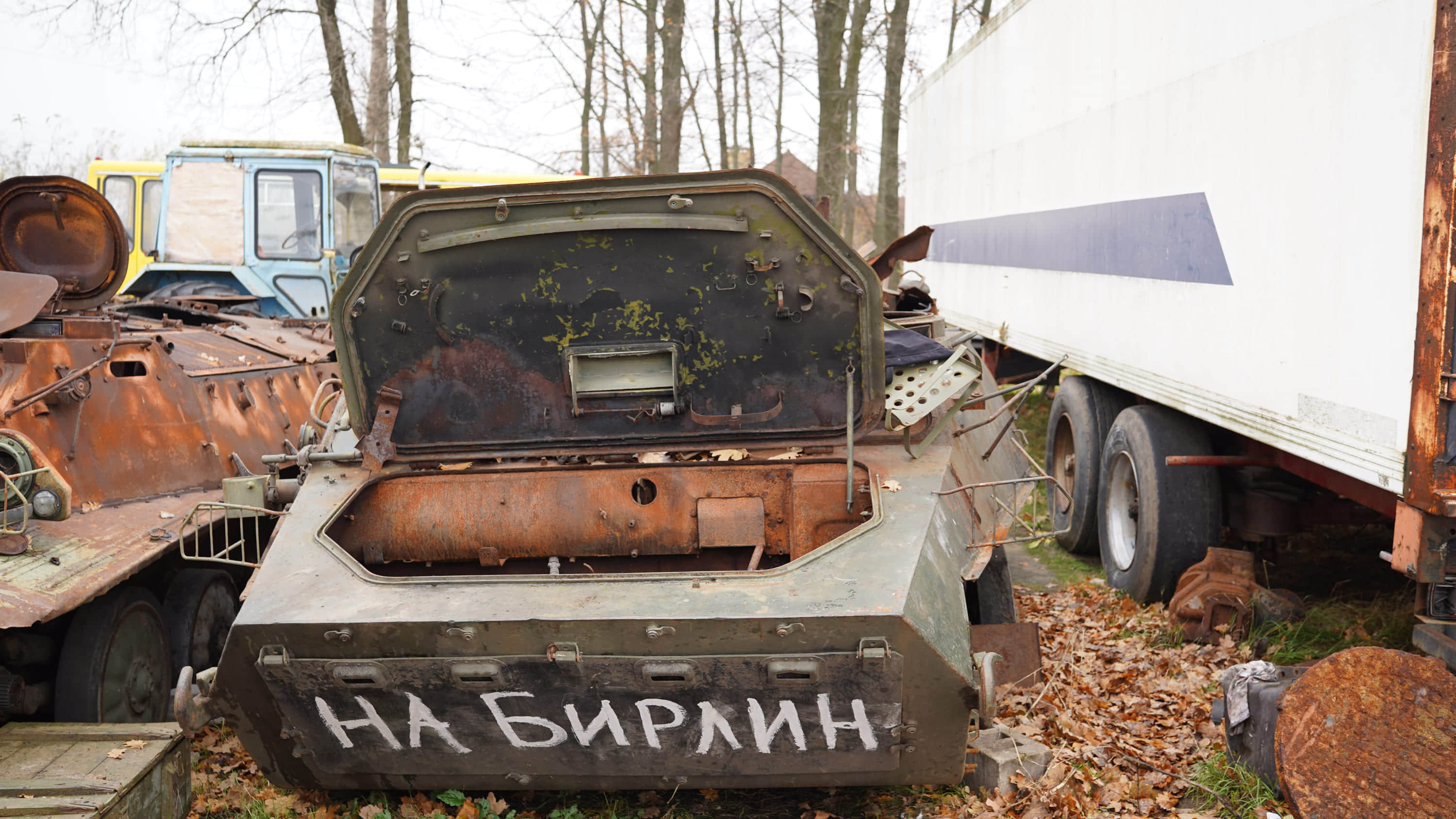 A dilapidated BRDM-2 armoured vehicle with "To Berlin'' painted on it.Photo: Jan Wysocki
A dilapidated BRDM-2 armoured vehicle with "To Berlin'' painted on it.Photo: Jan Wysocki
"Build back better"
Tsyrkuny is one of six settlements that have been chosen by Volodymyr Zelenskyy as a "model" town for reconstruction. After the war, it is to be "built back better". US£27 million in funding from Ukraine's central budget has been secured for the reconstruction.
"There are new guidelines: public buildings will have to have shelters, they have to be energy-efficient, environmentally friendly, and adapted for disabled and elderly people," Sikalenko says. "This school will be rebuilt almost from scratch," he says, pointing to a dilapidated building next to the tent where we're talking. "Only the walls of the old building will remain, and everything will be new."
Advertisement:The people of Tsyrkuny were under Russian occupation for more than seven months, and all their public buildings will have to be either reconstructed, or built from scratch. They have been devastated by the fighting and extensive shelling.
Any that did survive have been stripped bare by looters. The village is also in dire need of residential buildings. According to Viktor Shmygol, who is a reconstruction attorney and liaison between the local and central government, there are plans to set aside plots of land for housing.
Reconstruction will take time. The city's mayor, meanwhile, is focusing on the needs of the here and now. Before the war, 6,000 people used to live in Tsyrkuny, and 14,000 in the entire hromada [municipality - ed.].
Now only 1,500 residents remain in the village. They are largely elderly or disabled. Living conditions are harsh, as in the case of Halyna, who had to live in a cowshed.
"My house was hit by an Iskander!" Halyna is utterly convinced of this. However, the damage to her house, though extensive, points rather to an unexploded projectile. The missile flew across her house and out the other side, smashing the brick fence.
Tsyrkuny or not, it was enough to deprive a senior citizen of a roof over her head.
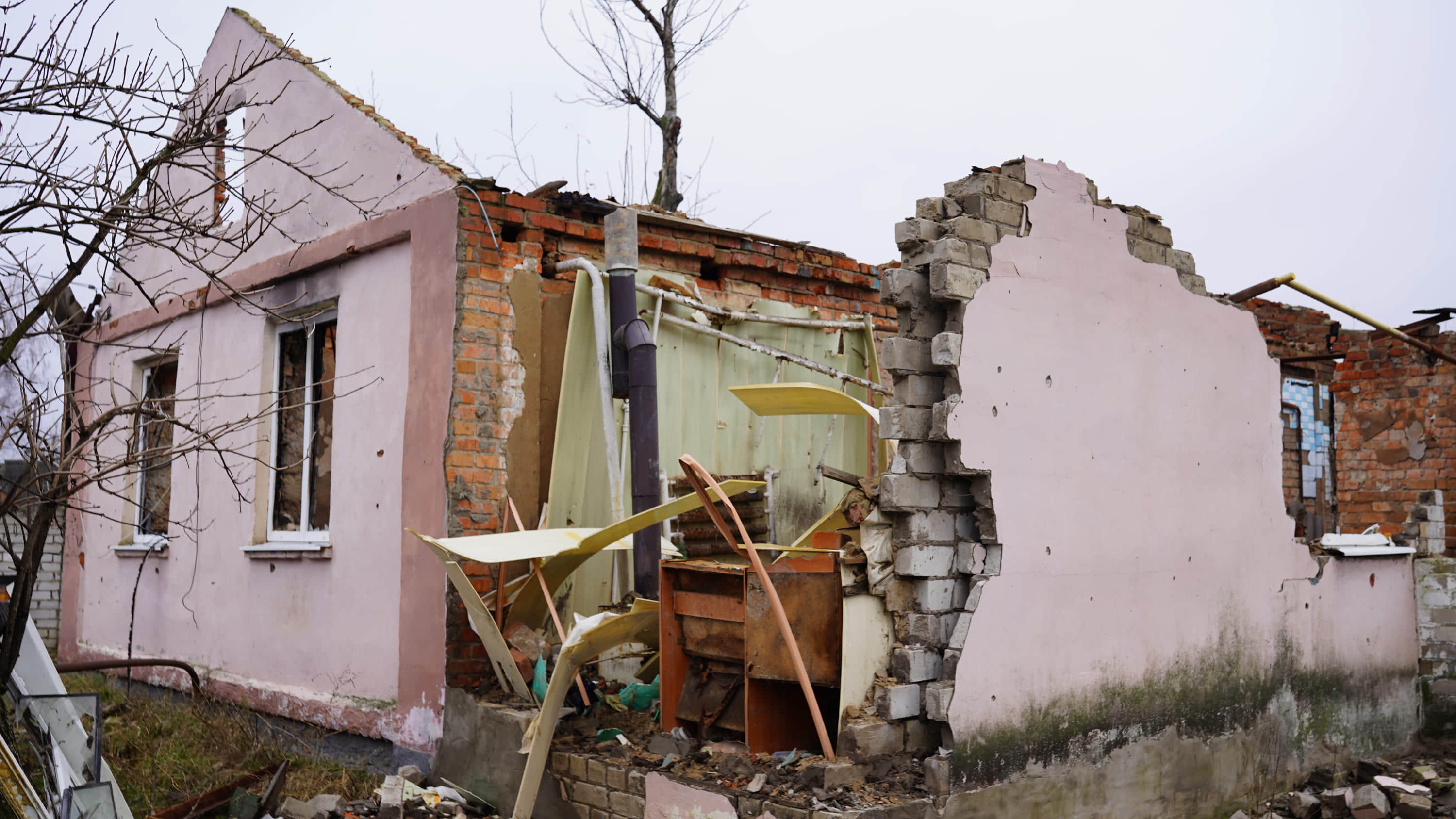 Photo: Jan Wysocki
Photo: Jan Wysocki
"I had four TVs and a beautiful kitchen!" the elderly woman says. "Now this has happened to me in my old age, and if it weren't for Misha, I wouldn't even be able to live in this barn." Misha, or Michal, works for the Polish Center for International Aid (PCPM). In Tsyrkuny, he is coordinating the rebuilding of roofs and windows in 80 houses. The foundation supports people in the most difficult situations, like Halyna.
"Repairs like this prepare for winter and will enable these people to survive. We don't have the funds for full renovations. These are too costly for our foundation, which depends heavily on individual donors.
The money for winter preparations was donated by the Taiwanese community," says Anna Radecka of PCPM. "The needs are overwhelming, and we are the first organisation to start such activities here. But there is so much work that even if 10 organisations showed up, everyone would have work to do.
And this is only one locality," she adds.
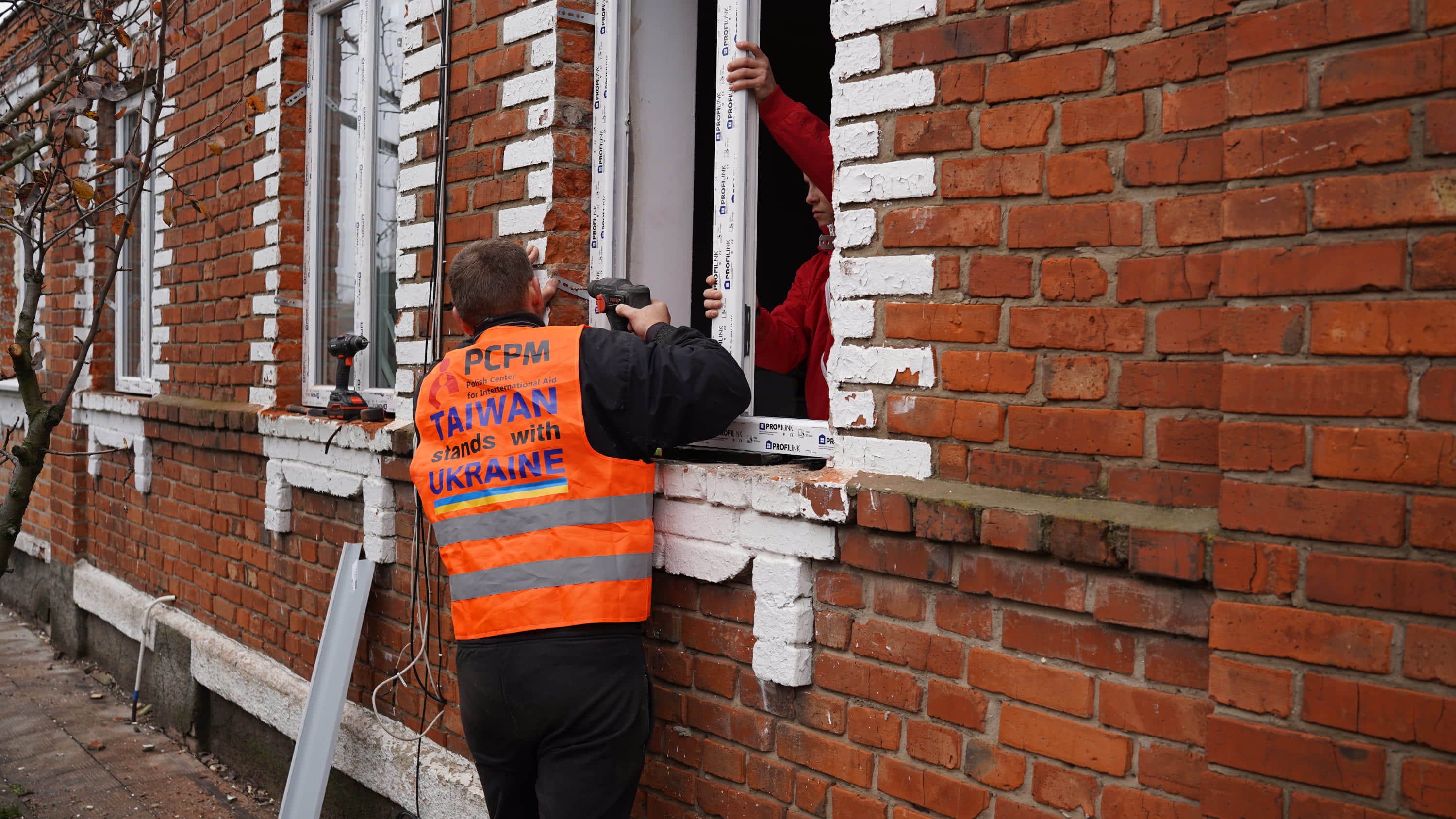 Photo: Jan Wysocki
Photo: Jan Wysocki
Where is this Bandera?
Lyptsi and Vesele are to the north of Tsyrkuny. As you drive between the small hills typical of this part of the country, more destruction and other traces of war emerge time and again. The anti-tank barrages have been pushed to the side of the road, but empty trenches and mine warning signs are reminders of the danger.
For this reason, there is no sign of the once-numerous agricultural machinery in the fields, only grass swaying in the wind.
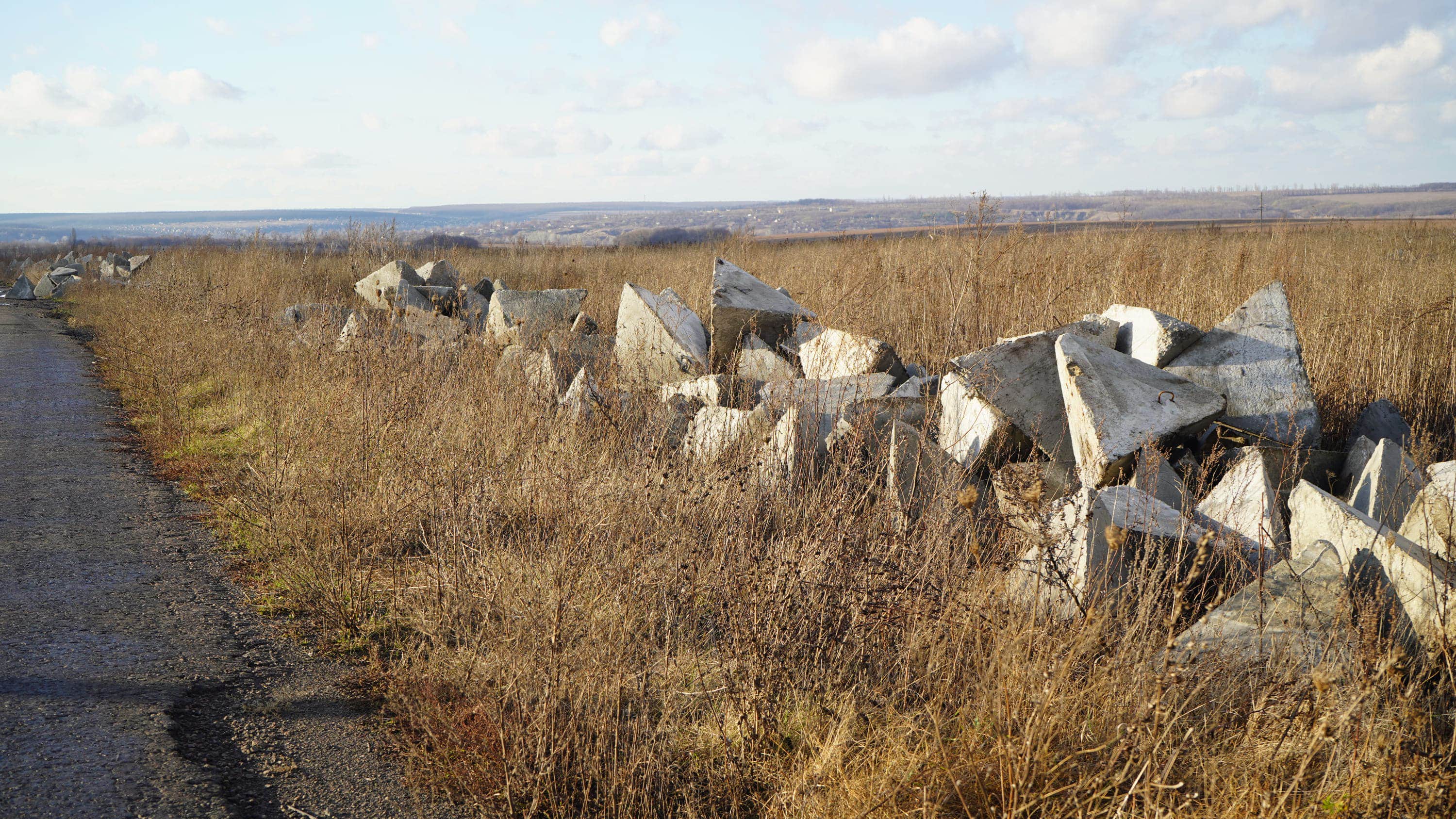 The anti-tank barrages have been pushed to the side of the road.PHOTO: JAN WYSOCKI
The anti-tank barrages have been pushed to the side of the road.PHOTO: JAN WYSOCKI
We travel to Lyptsi and Vesele together with the PCPM Foundation and a Ukrainian organisation, which is bringing firewood and basic humanitarian products donated by the Polish organisation. The wood is unpacked in a decrepit hall that has been damaged by Russian shelling. Most of the locals left in the village are elderly people for whom getting firewood on their own is a huge challenge.
Most of them heat their homes with gas, but all agree that they may run out. That's why the 3 cubic metres of wood they've received is considered a safety net in case of hard frosts. Elderly people with impaired mobility in particular have to rely on humanitarian organisations.
Pensions are low and only enough to cover basic essentials. So the wood and humanitarian packages they receive will allow them to save money for other purposes.
Advertisement:The PCPM Foundation plans to deliver household chemicals and wood to other villages in the area later this year. "Buryats, Asians, Kalmyks, Chechens - they were here," says a resident of Vesele, recalling an attack by the Russian army. "Oh, there was a tank here, and its turret flew a very long way," he continues, pointing to a field next to the hall.
It is becoming increasingly difficult to see it under the overgrown grass. There is no one to clean up the damage, and anyway, any area could be mined.
 PHOTO: JAN WYSOCKI
PHOTO: JAN WYSOCKI
"I've lived here all my life, and the Russians tell me that I'm a fascist and a Banderite. I've never seen one in my life - I don't even know what Bandera looks like!" the local man from Vesele goes on, continuing his story from the early days of the war.
When I say goodbye to him, he stresses that he doesn't want his name to appear in the media. He is afraid because he describes himself as a partisan.
"They even took away my guitar"
There is a community centre in the heart of the village. There's no electricity, but Ukrainian songs ring out from inside.
Veteslav, one of the residents, recalls: "We used to have dance groups for children, young people, and the elderly. We travelled around Ukraine and gave performances, and in the village, there was a concert every week. I play the guitar and the accordion, and I sing as well.
This was a small village, like many in Ukraine, but we lived a decent life. Then they came..." He points to the hall where the wood is being unloaded: "One day the occupiers were fired on by one of their own helicopters," he chortles, waving his hand.
Advertisement:The Russians took everything they could and destroyed what they could not.
According to accounts from the people of Lyptsi, the Russian soldiers thought they were going to "liberate" the Ukrainians. However, they soon found out that "things are not bad at all in this Ukraine". Brick houses, good roads, mechanised agriculture.
"They quickly realised why people did not welcome them at all as liberators," the villagers recalled.
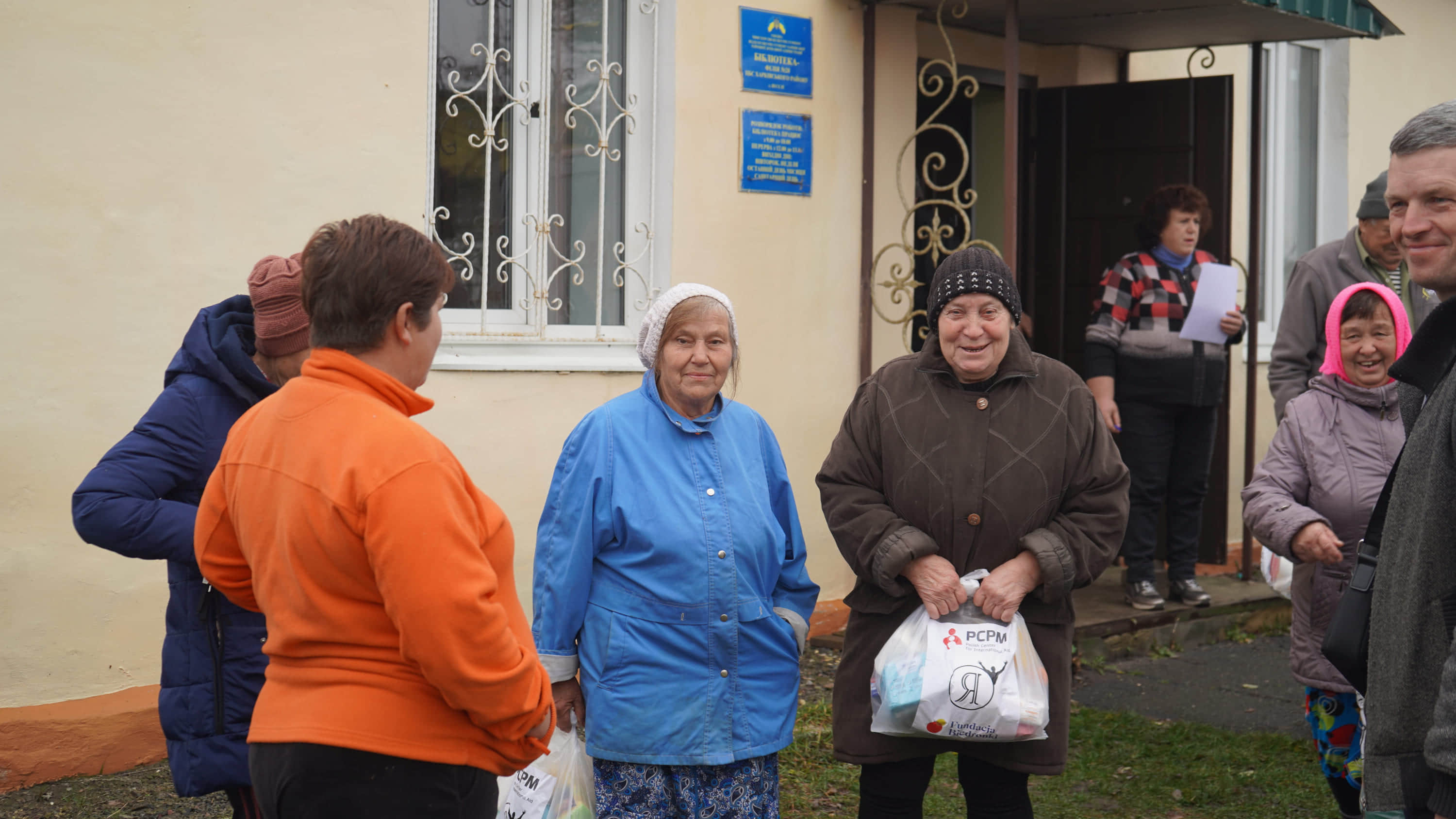 PHOTO: JAN WYSOCKI
PHOTO: JAN WYSOCKI
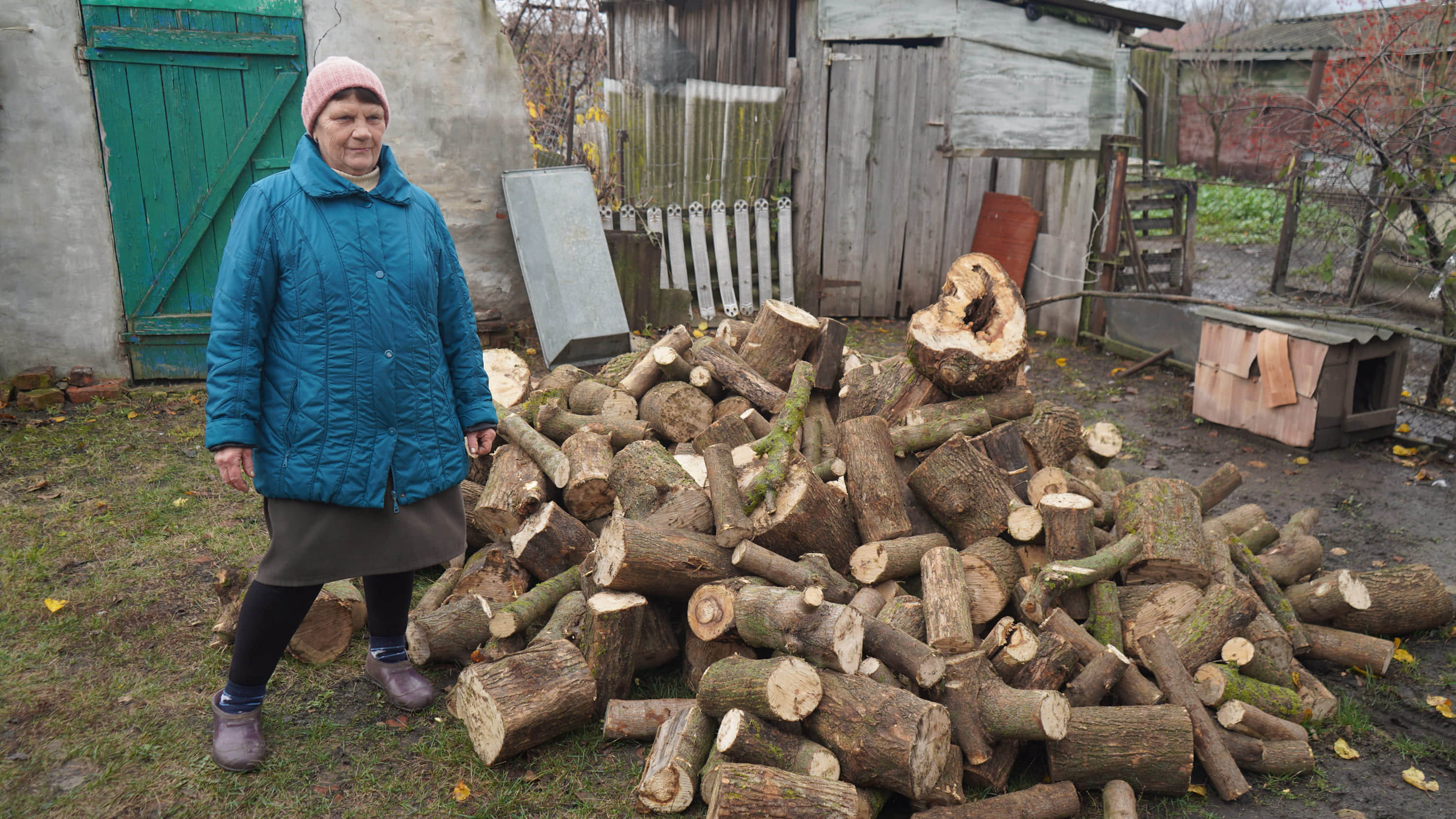 PHOTO: JAN WYSOCKI
PHOTO: JAN WYSOCKI
"I'm a tractor driver and I used to work at a local cooperative. But how can you sow anything here when it's all mined?" says one local resident who is collecting his allotment of firewood. Viktor Vinogradov from a local organisation called "I am Saved," which works with PCPM, warns us to watch where we put our feet.
He shows a photo of a small Russian mine, commonly known as a "butterfly". There are hundreds of thousands, if not millions, of them lying all over Ukraine. These mines are scattered by rockets, making it unclear where they might be.
This type of mine is designed to wound rather than kill. An explosion can end up with a person's limb having to be amputated. There is a macabre logic behind it: a wounded person requires more people and resources than a dead one.
Viktor reassures us that "there are unlikely to be any under my house," but a dozen metres away, "it's a headache". Why doesn't he want to leave if it's not safe to farm the land? "Where would I go?
I've been here my whole life, here with my wife. A wife is like a second hand, and a marriage is like a body: it has to be complete to function well," he says.
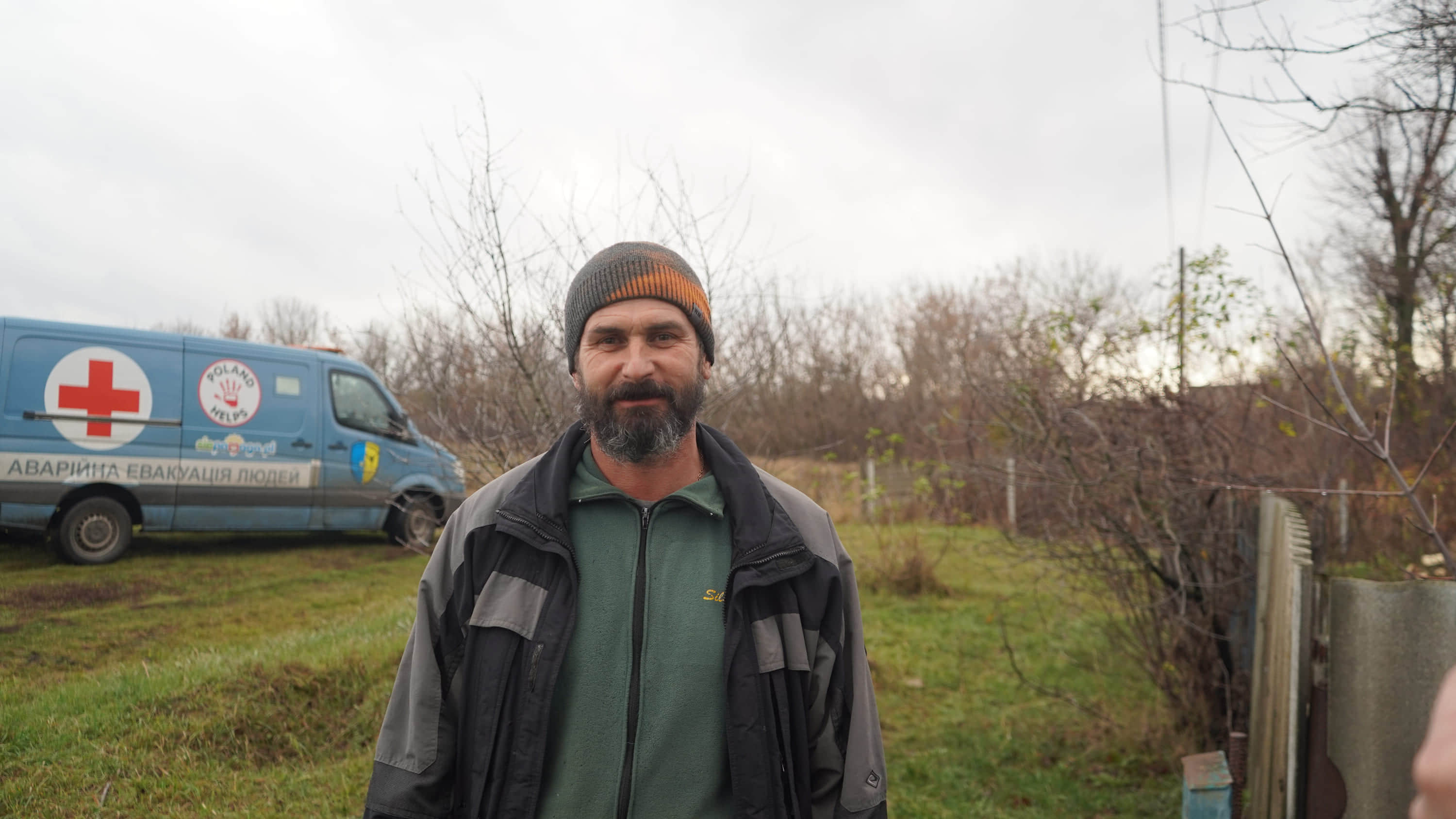 Viktor VinogradovPHOTO: JAN WYSOCKI
Viktor VinogradovPHOTO: JAN WYSOCKI
People under the rubble
Kharkiv itself, too, is disfigured by many scars from Russian shelling. In particular, the houses that are furthest north - towards the Russian border - are so badly damaged that they are uninhabitable.
In one of them, where demolition is underway, there are still dead bodies buried under the rubble, Ukrainian volunteers from "I am Saved," who are also from Kharkiv, tell us. During the Russian shelling, the first row of apartment blocks served as a protective wall for the rest of the district. But the buildings there are not unscathed either.
Advertisement:There is a pile of rubble in the middle of the neighbourhood.
The building's former purpose can only be discerned from the school boards and lockers that lie around, strewn with bricks and pieces of concrete. Despite the destruction of the apartment blocks and the school, life in the neighbourhood goes on. A gradual reconstruction is underway.
Drills and grinders can be heard, drowned out every once in a while by the anti-aircraft warning. Here, too, the PCPM Foundation will help residents, replacing a hundred windows in the coming weeks. This will be the third winter during the war.
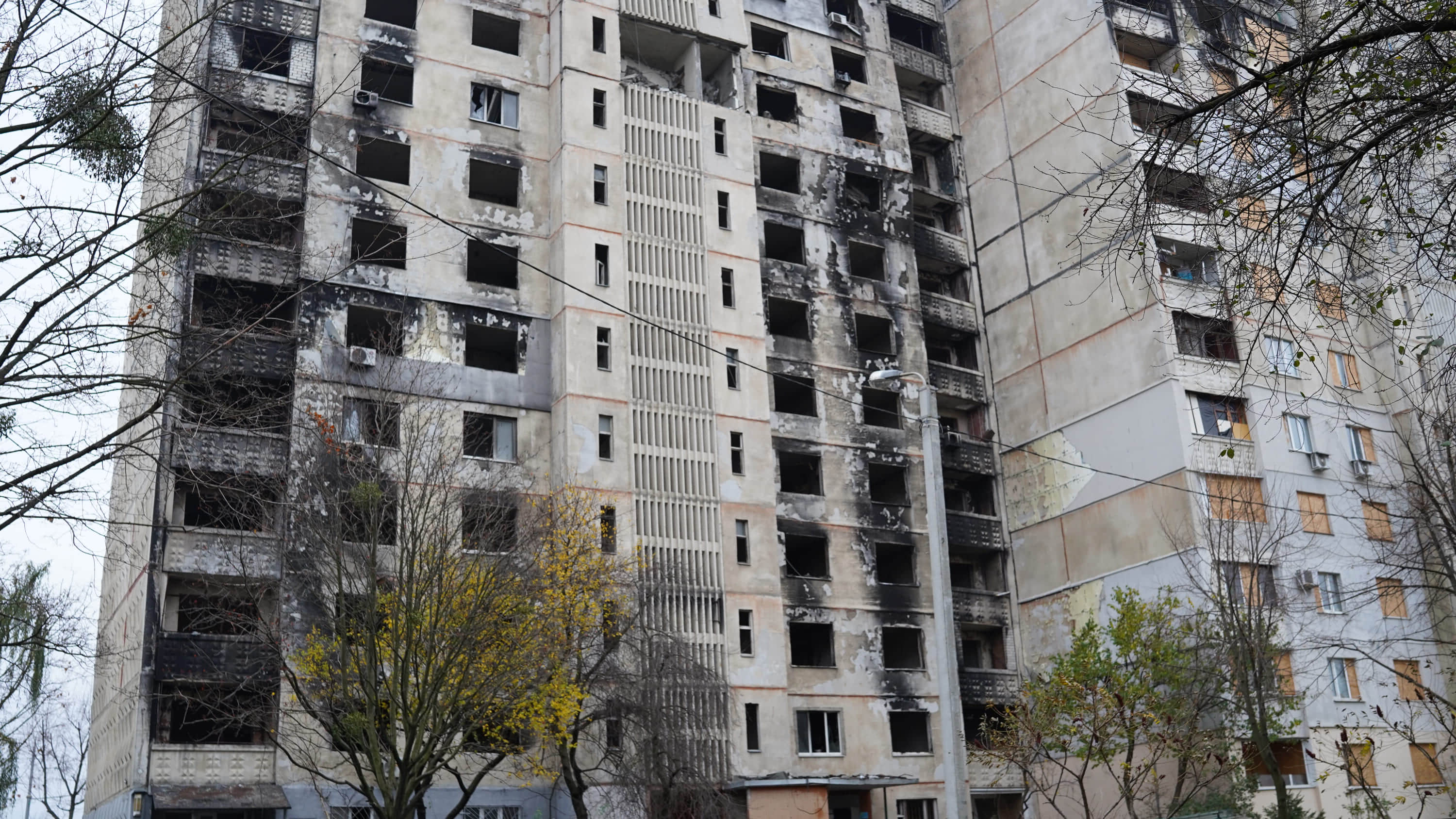 PHOTO: JAN WYSOCKI
PHOTO: JAN WYSOCKI
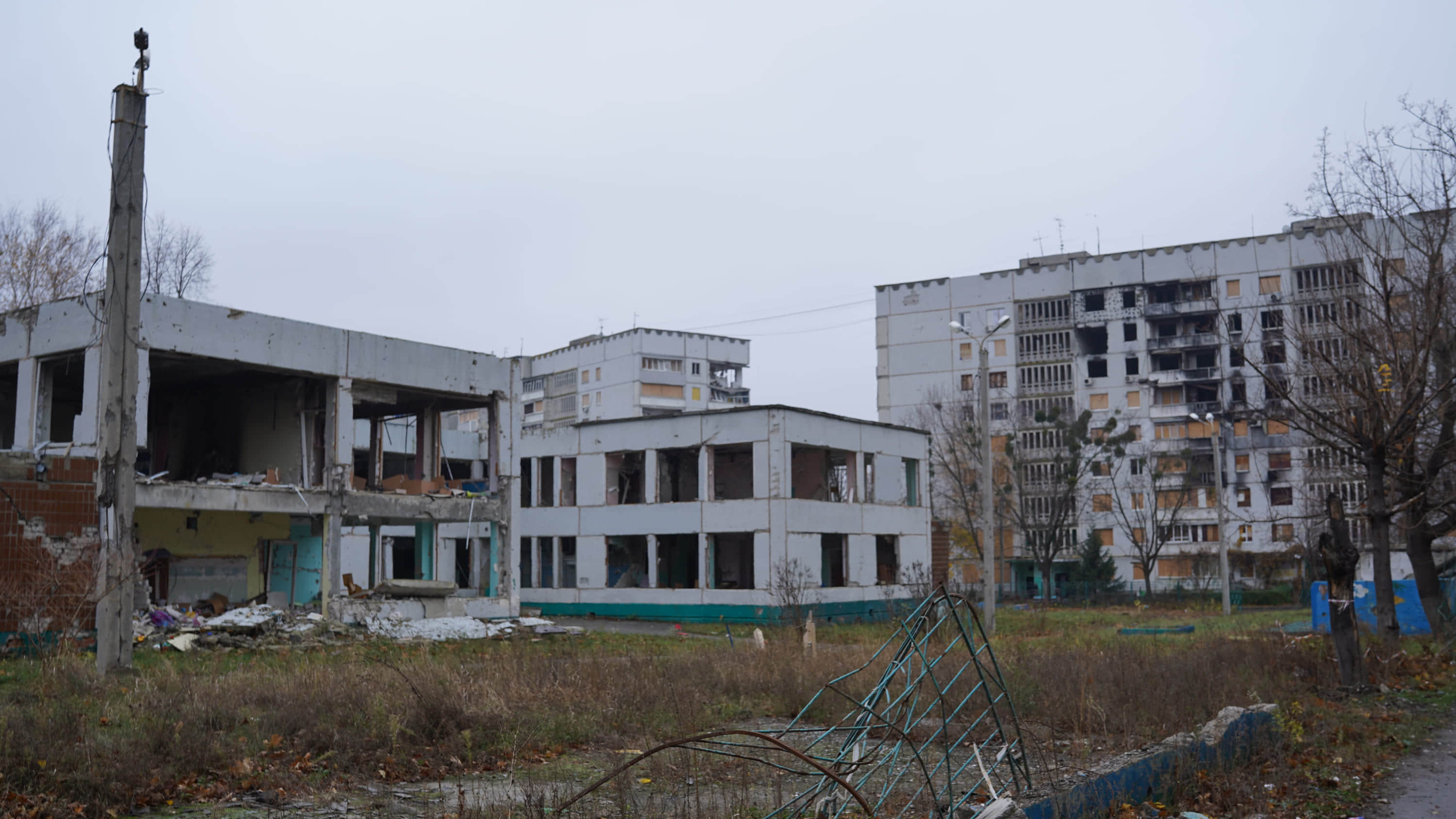 PHOTO: JAN WYSOCKI
PHOTO: JAN WYSOCKI
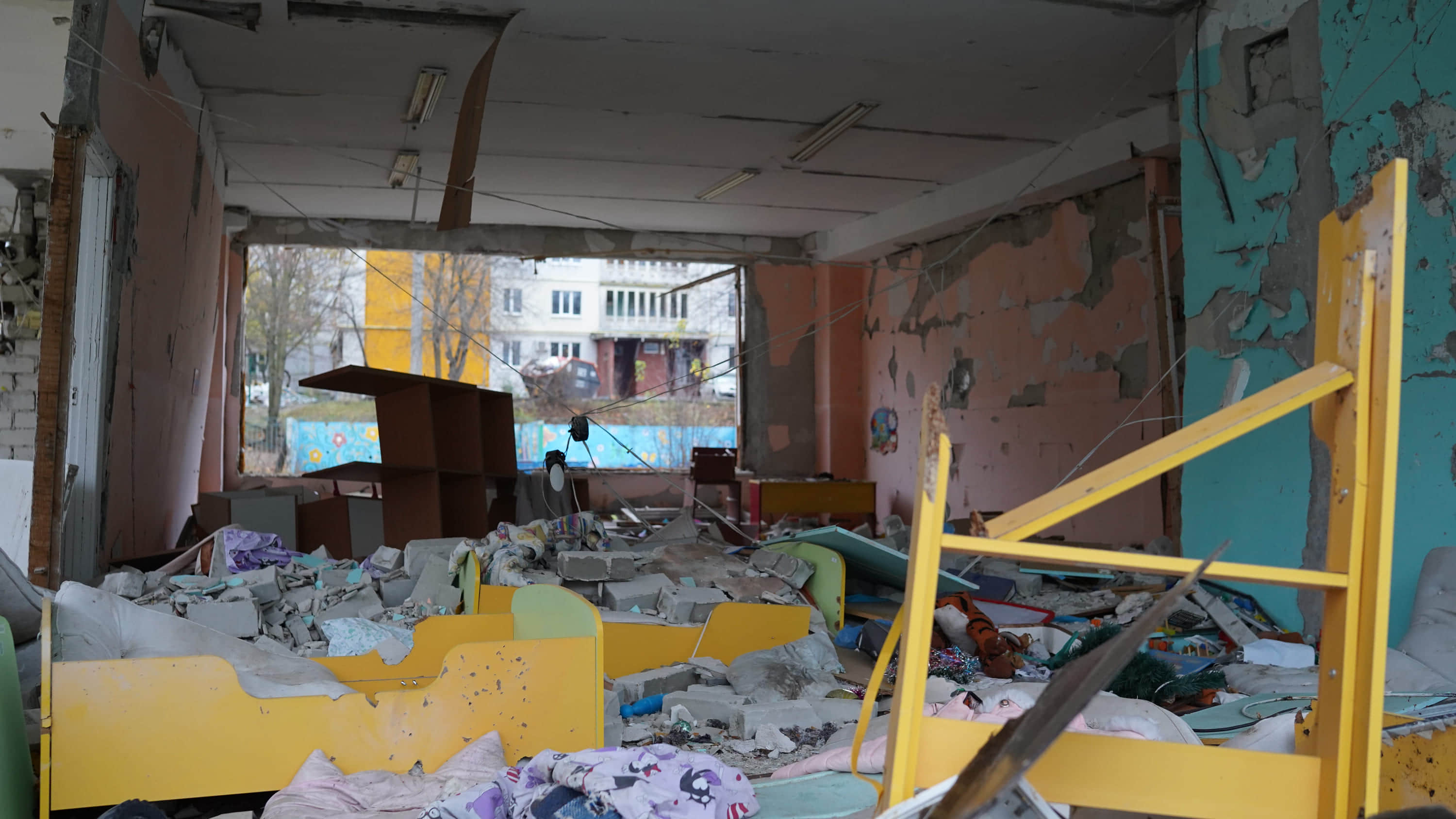 PHOTO: JAN WYSOCKI
PHOTO: JAN WYSOCKI
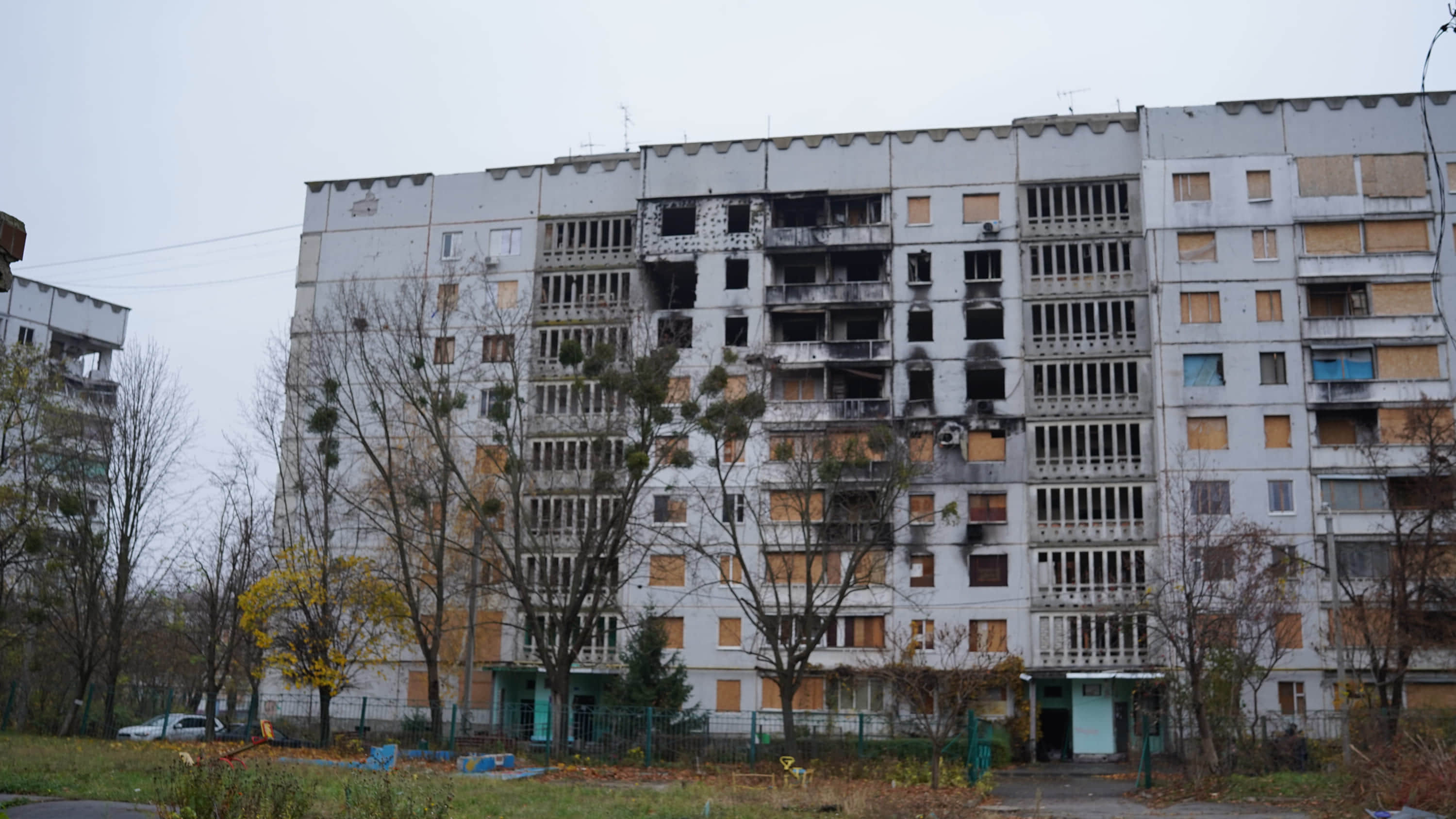 PHOTO: JAN WYSOCKI
PHOTO: JAN WYSOCKI
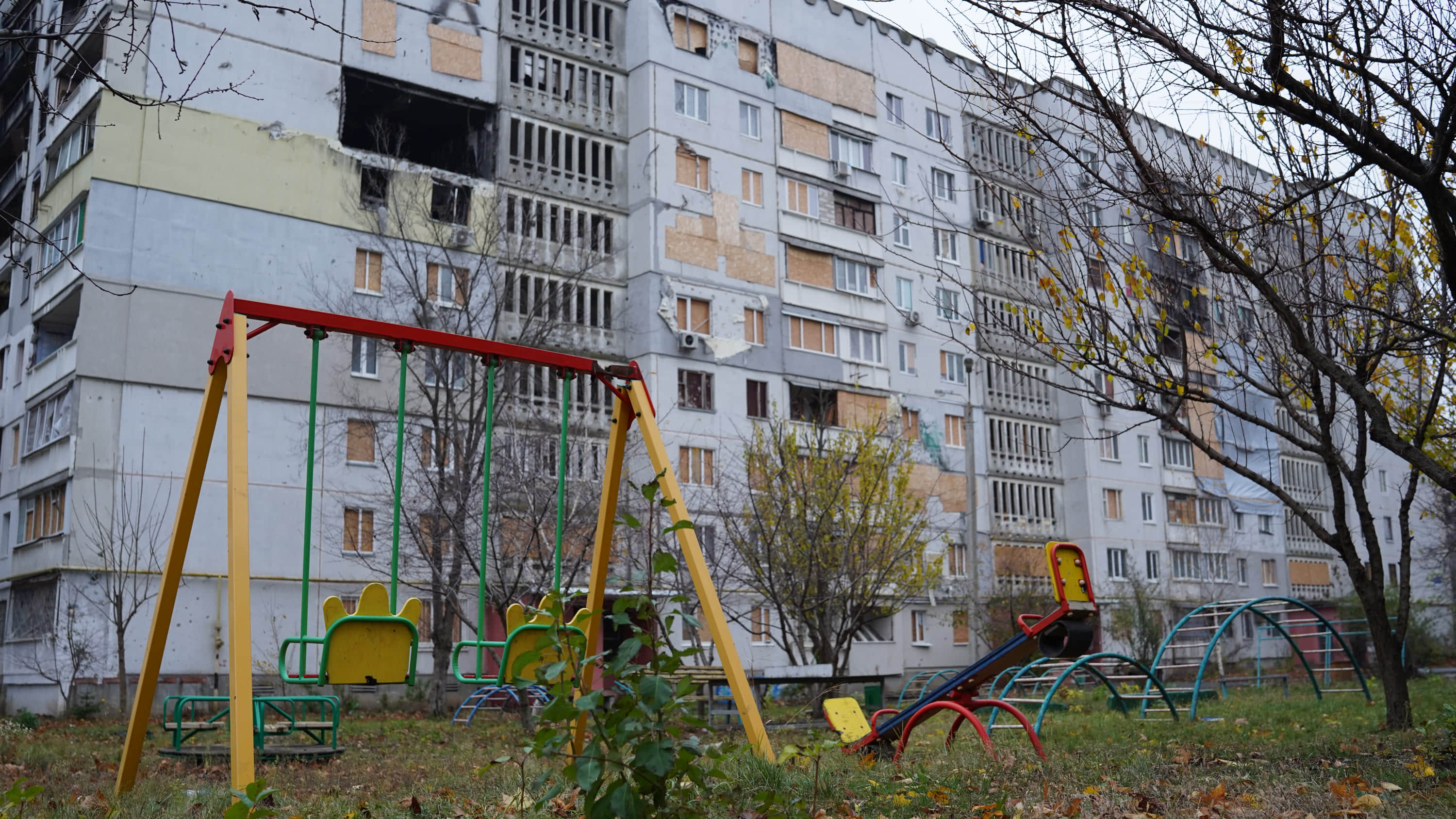 PHOTO: JAN WYSOCKI
PHOTO: JAN WYSOCKI
The repair work isn't just practical.
It also serves as confirmation to local residents that Ukraine is not forgotten. In addition to the practical work, there are also symbolic changes. Letters from the Russian alphabet have been removed from the signs in Nataliia Uzvyi Street and replaced with Ukrainian ones.
This street and others like it, as well as Kharkiv as a whole, are meant to bear witness to the fact that Ukraine will never be Russian.
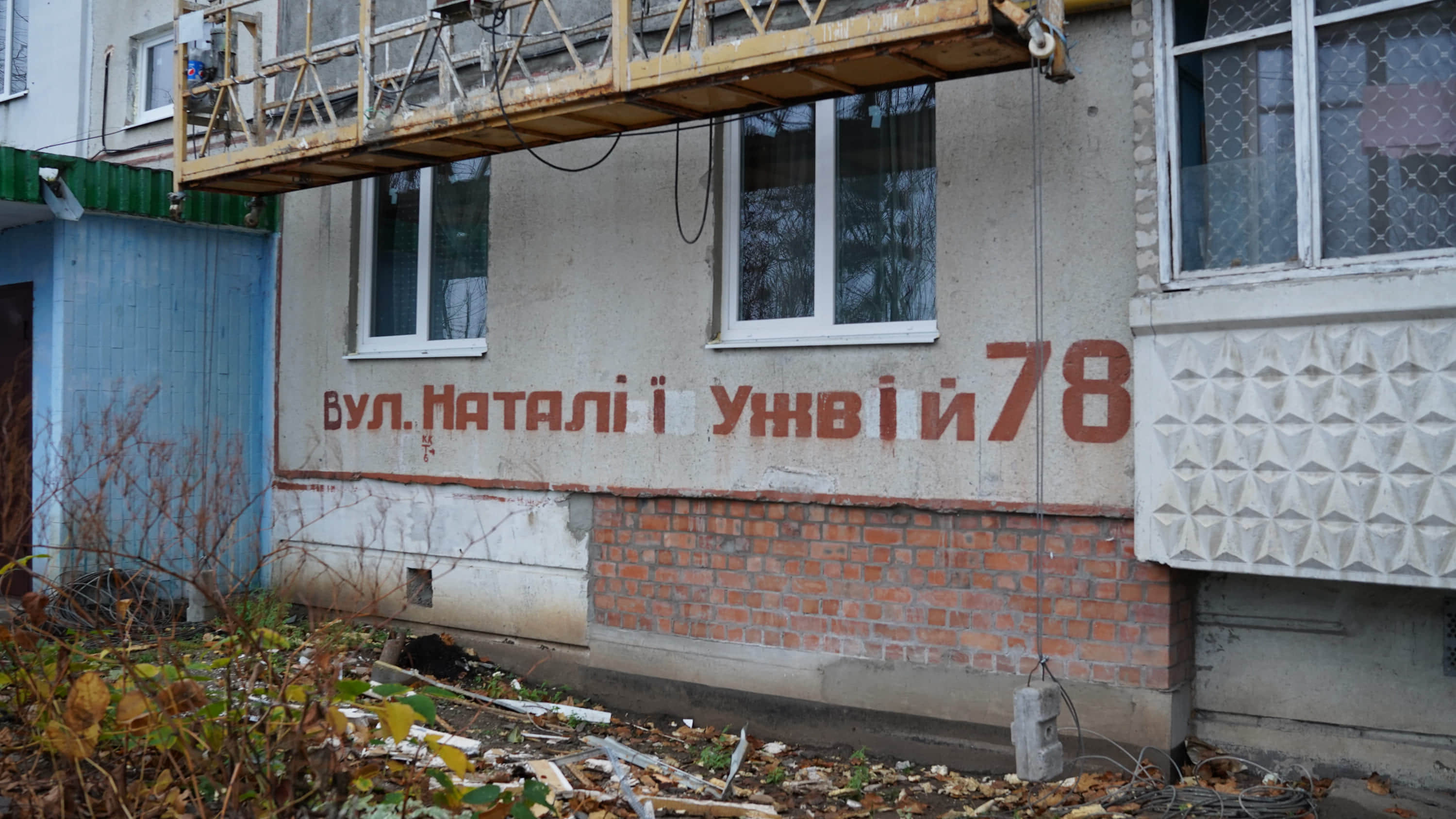 PHOTO: JAN WYSOCKI
PHOTO: JAN WYSOCKI
"I'm from Kharkiv and I spoke Russian all my life. Since 2022, I've only spoken Ukrainian. In the end, the battle is over whether we can just be ourselves." These are the words I hear from the Kharkiv resident I met on the train.
Edited by Teresa Pearce